999
JUMP START DEAD BATTERY
09985823718 028995261
Mandaluyong
Dead Battery Charging,
Jump Start,
Replacement Car Battery,
Motolite
1. Please provide your name
2. Please provide your number
3. Please provide your inquiry
Start Chatting in 3 easy steps
No registration required.
No registration required.
365570 ads
We are one of the largest free online selling communities with thousands of active sellers.
306954203 views
Do you have something to sell? Your next sale might be just a few clicks away.
4.7 stars
Based from 898 member feedbacks. We value your suggestions and use it.
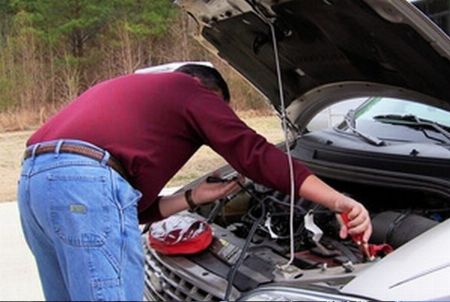
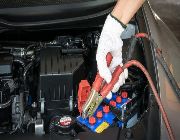
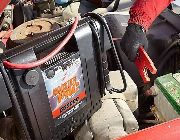

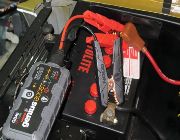
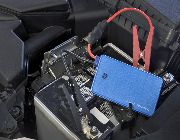
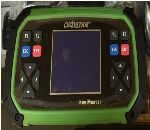
Jumper cables are a must-have in every car-owner’s emergency kit. They allow you to help a fellow motorist in need, and vice versa. Even if you’ve never had your battery fail on you before, the unexpected can always happen, that’s why it’s important to always have a jumper cable on hand. Of course, you need to know how to use those cables properly and safely if you want to get your vehicle back on the road fast. Call us 09985823718
Preparing your car for jump starting
When you find a Good Samaritan who can help you out, check if both batteries have the same voltage and polarity. For instance, if your battery has 12 volts and a negative ground, make sure the other battery has the same specifics. Otherwise, you’ll need to find another car and driver to help you.
Have the other car park close enough to have enough slack on the cable and avoid damaging it. But don’t let the vehicles touch, as this could cause a short that could electrocute anybody in contact with the vehicle surfaces.
Make sure that the electrical systems in both cars are completely off. Turn any ignition switch to the ‘off’ position. Put both cars in ‘park’ or ‘neutral’ and set the parking brakes.
Don’t smoke anywhere near the batteries. Sparks and embers that occur around a battery can trigger an explosion. When everything is set, it’s time to hook up the jumper cables.
Connecting the clamps
Start by attaching the positive clamp to your battery’s positive post. Make sure the other end of the positive clamp is not touching any part of the car, as this could cause a spark. Next, attach the other positive clamp to the post of the working battery.
Connect the negative clamp to the good battery’s negative post, then connect the other end to a clean and unpainted metal part of the engine, such as bracket or a bolt. Do not attach the negative clamp to the negative post of the weak battery, as this could ignite the hydrogen gas directly over the battery and cause it to explode. It is rare with modern batteries, but it’s still a concern. Likewise, make sure to avoid any belts, fans and other moving parts.
Confirm that all the clamps are making good contact. Brush away any dirt or gunk that could prevent a clean and solid connection.
Now start the car with the good battery and let it run for five minutes to charge the weak battery. Afterwards, start the car with the weak battery.
Removing the clamps
When your car starts, wait about 15 to 30 seconds before removing the clamps. Leave the vehicle running while you carefully disconnect the clamps in reverse order. First remove the negative clamp on your car, then the negative clamp on the good battery. Next, remove the positive clamp on the good battery, then the one on your car. Never let the positive clamps touch any part of either car.
When everything is in order, put the battery post’s covers back on if you have them. Shut the hood close, put your cables back in storage, thank the Good Samaritan and be on your way.
If you want to do away with the need for another vehicle to give a weak or dead battery a jump, you may want to look into buying a portable battery pack.
A jump start, also called a boost, is a method of starting a vehicle with a discharged or dead battery. A temporary connection is made to the battery of another vehicle, or to some other external power source. The external supply of electricity recharges the disabled vehicle's battery and provides some of the power needed to crank the engine. Once the vehicle has been started, its normal charging system will recharge, so the auxiliary source can be removed. If the vehicle charging system is functional, normal operation of the vehicle will restore the charge of the battery.
Motorists may carry jumper cables in case of accidental discharge of the vehicle battery (for example, by headlights or ignition switch left on while the engine is not running). Safe procedures for connecting and disconnecting cables are given in the vehicle manual.
Jumper cables, also known as booster cables or jump leads, are a pair of insulated wires of sufficient capacity with alligator clips at each end to interconnect the disabled equipment/vehicle with an auxiliary source, such as another vehicle or equipment with the same system voltage or to another battery. The alligator clips may be covered in insulation to prevent inadvertent shorting. Clips may be made of copper or steel.
This seller has been a member since: Nov. 08, 2018
Member Location:
Total Classifieds: 11
Why seller feedback is important?
Transact with most credible & reputable sellers
Know the seller you are going to deal with
Claim warranty long after purchasing the item
Warn you and other buyers against scams
Motivates sellers to provide good service